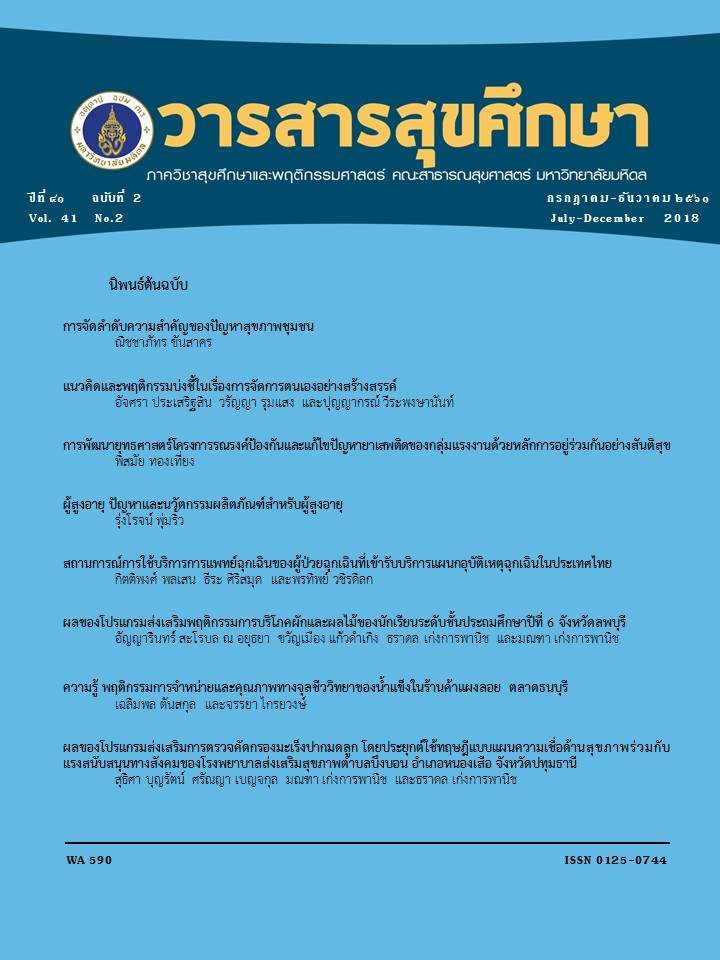The Situation of Using Emergency Medical Services at the Emergency Department of Emergency Patients in Thailand
Main Article Content
Abstract
This research aimed to analyze the situations and characteristics of individuals, families, societies, areas and methods of travelling when using Emergency Medical Services (EMS) in the Department of Accident and Emergency Services or Emergency Room (ER). This was a descriptive study. Secondary data were collected from 40 hospitals and primary data by interviewing patients or their relatives admitted to the ER. The sample totaled 2,011 patients from 45 hospitals. The secondary data showed that the user rate of EMS was 19.1%. Primary data revealed the majority of patients using the EMS comprised males (59.4%), aged 60 years and above (55.0), presenting underlying disease with hypertension (49.2%) and physical disability (67.8%). For family characteristics, the majority of patients suing EMS resided with an elderly individual (11.5%) and had one motorcycle in the household (88.0%). Moreover, the majority locations referred by EMS were located within 10 kilometers of the hospital (30.8%). The majority could access the mobile phone signal at that place (99.4%). For EMS transport, the majority used the EMS vehicle of the Local Administrative Organization (LAO) (44.9%). However, their family car was used by patients who came by themselves (83.8%).
The results showed that most people do not use EMS because of misunderstandings regarding accessing. However, use has increased from the past. In addition, patients using EMS were consistent with social and illness situations. Access to EMS should be more widely promoted especially among the elderly, individuals with congenital diseases and those with disabilities. The call number 1669 should be disseminated to people as well. Moreover, the LAO should expand collaboration with EMS.


